Voluntary Liquidation Process Under IBC
INTRODUCTION
In accordance with Section 59 of Insolvency and Bankruptcy Code, 2016, a corporate person who intends to liquidate itself voluntarily and has not committed any default may initiate voluntary liquidation proceedings under this code’.
Before, the inception of the Code, the liquidation proceedings could be instituted before the NCLT as well as before the High Court but after the enactment of this Code w.e.f. 1st April 2017 the corporate person can only be put into voluntary liquidation by its shareholders. Also, the corporate person must be solvent i.e there are enough assets to pay off all the debts. The Board has introduced the Insolvency and Bankruptcy Board of India (Voluntary Liquidation Process) Regulations, 2017 for giving effect to the procedure involved in the Liquidation process.
This is a relatively newly introduced path for voluntary liquidation, and, in theory, it should be an important process.
PRE-CONDITIONS FOR COMMENCEMENT OF VOLUNTARY LIQUIDATION
For initiating voluntary liquidation under section 59, there are few pre-conditions required to be satisfied which are as follows–
- Intention of corporate person to liquidate itself voluntarily; and
- the corporate person has not committed any default;
- adequate assets to pay off its debts
- Members’ approval is necessary to initiate the process
EFFECT OF COMMENCEMENT OF VOLUNTARY LIQUIDATION
The Voluntary Liquidation shall commence from the date of passing the shareholders’ resolution subject to the creditors’ approval. The shareholders shall appoint an Insolvency Professional to act as Liquidator for the purpose of conducting the voluntary liquidation proceedings.
The provisions of sections 35 to 53 (relating to liquidation under the Code in respect of insolvent entities) shall apply to voluntary liquidation proceedings for corporate persons who among other things enumerate the power and duties of Liquidator.
The Liquidator takes control of the company’s affairs and almost all powers of the directors.
The Liquidator shall dispose off all the company’s assets and, after paying the costs and expenses of the liquidation, distributes remaining amount to the creditors and balance amount to contributories for moving further with dissolution process of company.
ROLE AND RESPONSIBILITIES OF DIRECTORS OF COMPANY UNDER LIQUIDATION
In voluntary liquidation proceedings, the company’s directors must:
- provide information about the company’s affairs to the Liquidator and attend interviews with the Liquidator as and when reasonably required;
- look after and hand over the company’s assets to the Liquidator, together with all its books, records, bank statements, insurance policies and other papers relating to its assets and liabilities
STEPS AS PER PRESCRIBED CODE AND RELATED REGULATIONS
The major steps involved in voluntary liquidation process under section 59 of IBC read with Insolvency and Bankruptcy Board of India (Voluntary Liquidation Process) Regulations, 2017 are as follows:
Step 1: Convene Board Meeting for approving the voluntary liquidation.
- In the Board Meeting, the majority of the directors of the company shall give declaration of solvency duly verified by an affidavit stating that
- the company is not being liquidated to defraud any person and
- the company will be able to pay all its debts in full from the proceeds of assets to be sold in the liquidation
- the company has made provision for preservation of its records after its dissolution
- Such declaration is to be accompanied with audited financial statements and record of business operations of the company for the previous two years or since its incorporation, whichever is later and a valuation report of assets of the company, if any, prepared by a Registered Valuer.
- Sending Notice of General Meeting to all the members for passing resolution for voluntary liquidation and appointment of Liquidator
Step 2: Passing of shareholder’s resolution and appointing a Liquidator.
- A special resolution passed by the members of the company in general meeting, within 4 weeks of giving declaration of solvency by the majority Directors, requiring the company to be liquidated voluntarily and appointing an Insolvency Professional to act as the Liquidator.
- Further, creditors representing two-thirds in value of the debt of the company shall approve the said resolution within seven days of such resolution.
- The Insolvency Professional shall intimate the Board about his appointment within seven days of such appointment.
Step 3: Public Announcement by the Liquidator
- As per Regulation 14 of Voluntary Liquidation Regulations, the Liquidator shall make public announcement (in English and regional newspapers) within five days of appointment as Liquidator in General Meeting calling stakeholders to submit claims within 30 days from liquidation commencement date.
- Publish on the website of the Company, if any.
Step 4: Filing of resolutions and declaration of solvency to ROC and Insolvency and Bankruptcy Board of India (IBBI)
- The Liquidator shall file the resolution passed in the general meeting to ROC and IBBI within seven days of passing resolution (or within seven days of creditors’ approval) and shall file Declaration of Solvency to ROC in e-form GNL.2
Step 5: Intimation to Income Tax Authority regarding initiation of Voluntary Liquidation process
- As per Section 178 of Income Tax Act, 1961, the Liquidator of the Company shall within 30 days of becoming such Liquidator shall give notice of his appointment and commencement of Voluntary Liquidation Process to the assessing officer of the company
Step 6: To open a bank account in name of corporate person
- Liquidator shall open a bank account in the name of the corporate person followed by the word “in voluntary liquidation” in a scheduled bank for transfer of funds to the said account and closure of existing bank account(s) of the corporate person.
Step 7: Registers and Book of Accounts of the Company
- The Liquidator shall ensure to keep the registers and book of accounts of the Company completed as on Liquidation commencement date and brought up to date. He shall maintain all books and registers as provided in the Reg. 10(2) of Voluntary Liquidation Process.
Step 8: Submission of Preliminary report to the Company by the Liquidator
- The liquidator shall submit a Preliminary Report to the Company within 45 days from the liquidation commencement date, detailing:
- the capital structure of the Company
- the estimates of its assets and liabilities as on the liquidation commencement date based on the books of the Company
- Whether he intends to make any further inquiry in to any matter relating to the promotion, formation or failure of the Company or the conduct of the business thereof; and
- the proposed plan of action for carrying out the liquidation including the timeline within which he proposes to carry it out and the estimated liquidation costs.
Step 9: Verification of claims submitted and preparation of List of stakeholders
- The Liquidator shall verify all the claims received within thirty days from the last date of receiving claims; and
- Communicate his decision of accepting or rejecting the claims with reason, within seven days of such acceptance or rejection;
- The Liquidator shall prepare list of stakeholders within Forty-five days from the last date of receiving claims (within fifteen days, if no claims has been received)
Step 10: Realisation of the assets and payment of all the debts
- The Liquidator shall realize proceeds from all the assets and distribute the proceeds within thirty days from realization after deducting Liquidation cost.
- Liquidator shall give final remittance to shareholders/contributories
- Lastly, Liquidator shall close the bank account opened for Liquidation purpose.
Step 11: Submission of Final Report to ROC, IBBI and NCLT
- On completion of Liquidation Process, the Liquidator shall prepare the final report enclosing audited accounts of the liquidation, showing receipts and payments pertaining to liquidation since the liquidation commencement date;
- Statements and declaration as enumerated in Reg. 38 of Voluntary Liquidation Process;
- The Liquidator shall submit the final report to ROC in GNL.2 and to the Board.
Step 12: Completion of Liquidation Process
- The Liquidator shall endeavor to complete the process and submission of final report with 270 days from the Liquidation Commencement date (90 days, in case of no creditors).
- In case the Liquidation process continue for more than 12 months, then the Liquidator shall:
- Hold a meeting of contributories within 15 days from end of 12 months;
- Present an annual status report indicating progress in liquidation enclosing the audited accounts of Liquidation showing receipts and payments relating to Liquidation
Step 13: Application to adjudicating authority for dissolution
- After the completion of Liquidation Process, the Liquidator shall make an application and submit Final report and compliance certificate in Form H to National Company Law Tribunal (NCLT) for passing dissolution order under section 59(8) of Code.
Step 14: File copy of order for dissolution of Company and change of status of company in master data on MCA website
- Copy of order for dissolution of Company shall be filed with ROC in Form INC 28 within fourteen days from the date of such order.
- A letter shall be made to IBBI to change the status of the Company from “Under Liquidation” to “Dissolved” in the master data appearing on the MCA website.
PRACTICAL ISSUES INVOLVED
There is a lack of standard guidelines on requirements by NCLT benches. During my appearance in the capacity of counsel / Liquidator it has come to my knowledge:
- That in certain benches of the NCLT specifically require, the application for dissolution to be services to IBBI and concerned RoC and a newspaper publication to be published inviting objection(s) on the proposed order of dissolution.
- That in so many instances, the Bench requires an NOC from the relevant RoC to be submitted before taking the application for dissolution on record, even though this requirement does not emanate from either IBC or related regulations.
These requirements imposed by the Bench is superfluous in nature and leads to unnecessary delay in the processes as the Liquidator has to make duplicate efforts and exercises already done by him before closure of liquidation.
- There is hesitancy in the banks for closure of existing bank accounts and also for opening of the new liquidation bank account by the Liquidator which is a mandatory step in the liquidation proceedings. The bank employees are not fully aware of the requirements leading to hesitancy among them.
CONCLUSION
In a developing economy like India, where micro small and medium enterprises are aspiring to contribute to the national GDP of the Country, the seamless exit is equally important as smooth start and ease of doing business. In line with the same, a legally recognized sound framework for dissolution of business in a hassle free manner is essential for all businesses irrespective of whether or not they are in financial crisis. Although the same has been introduced by Legislators in the form of IBC, yet, uniformity in the approach undertaken by Liquidators is required, at the same time the Hon’ble Bench has to prescribe standard practice for submission and disposal of Application for dissolution. There is also need to issue guidelines to Banks participating in the process for making them aware about the liquidation process, powers of Liquidator for opening of liquidation accounts and closure of existing accounts.

Anang Shandilya
Advocate & Insolvency Professional Managing Partner
Adlegus Law Consultants LLP Advocates & Solicitors, Noida [email protected]

